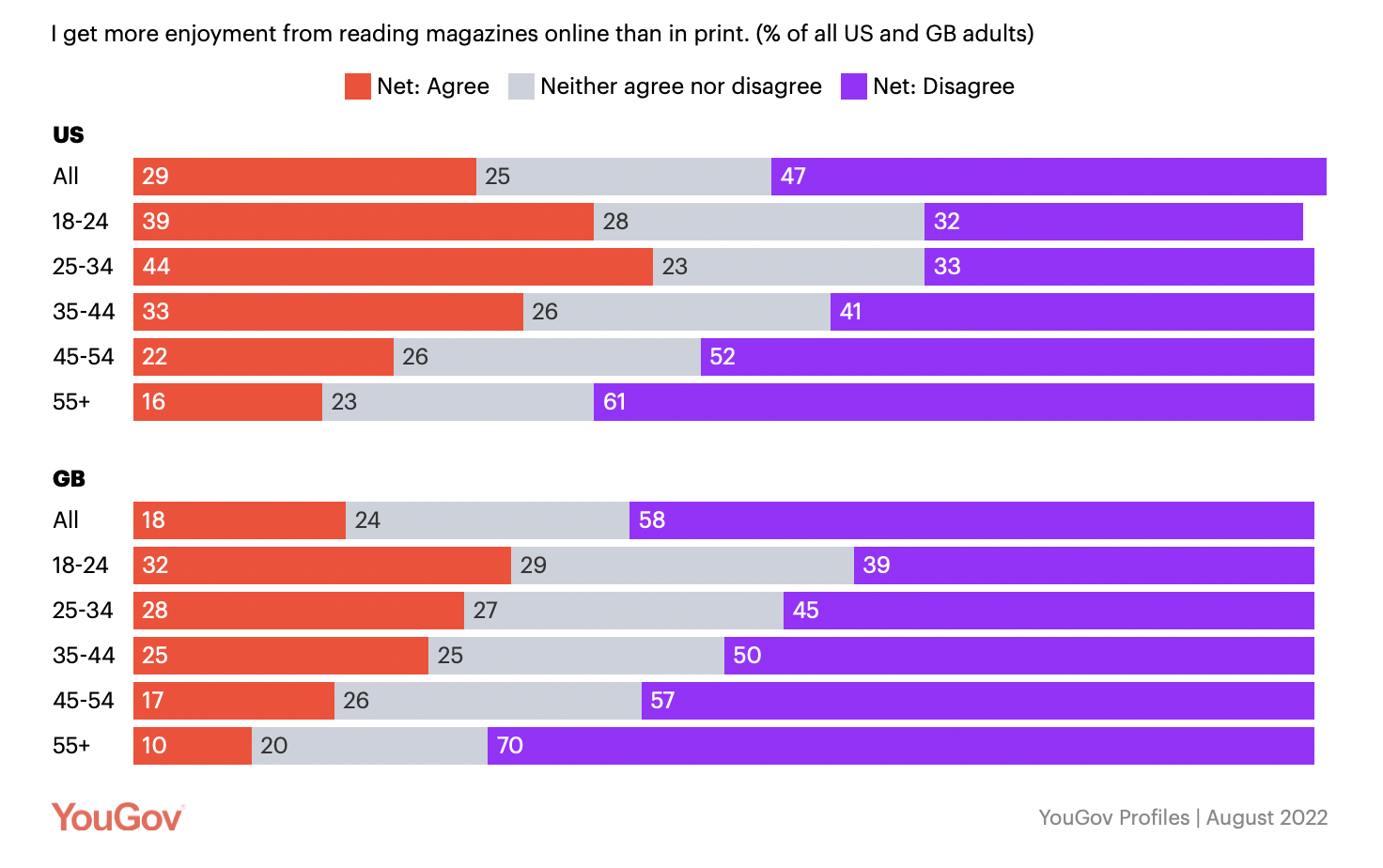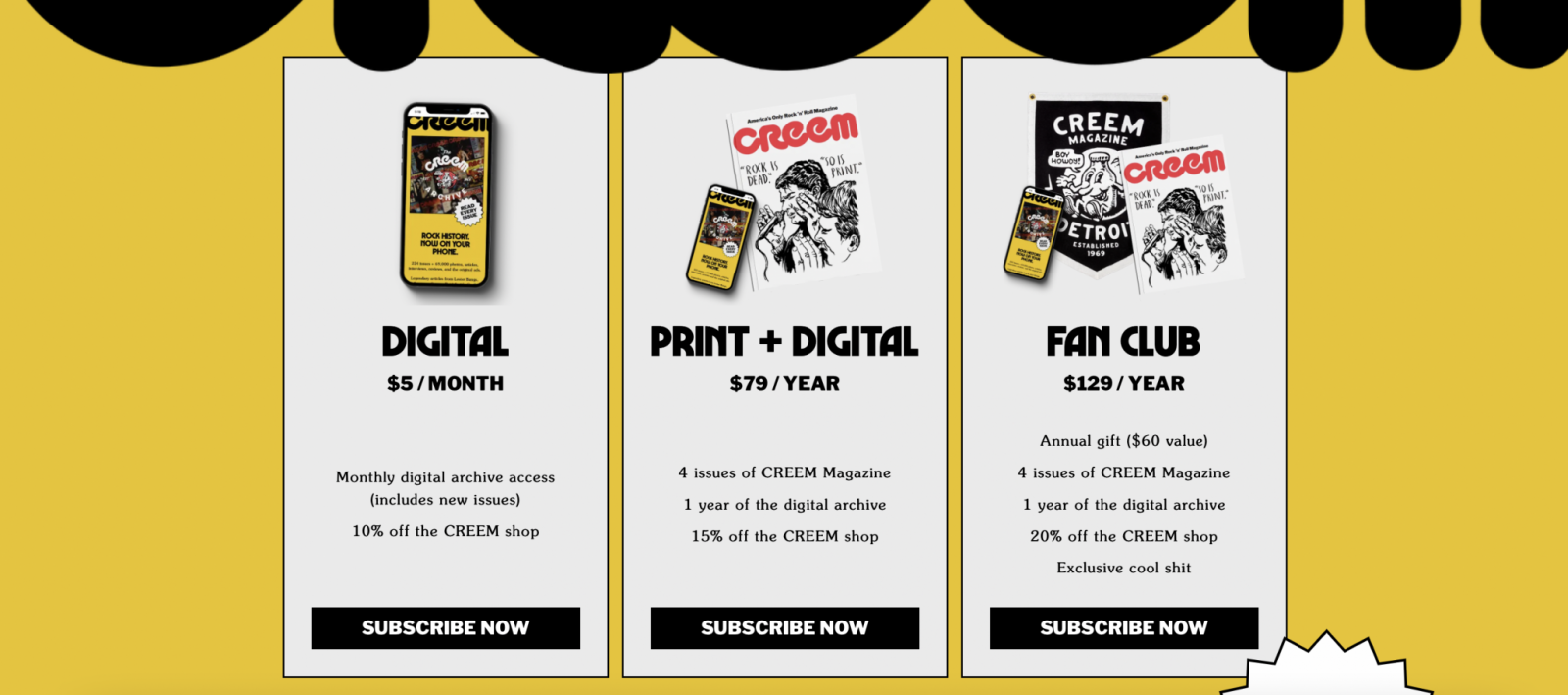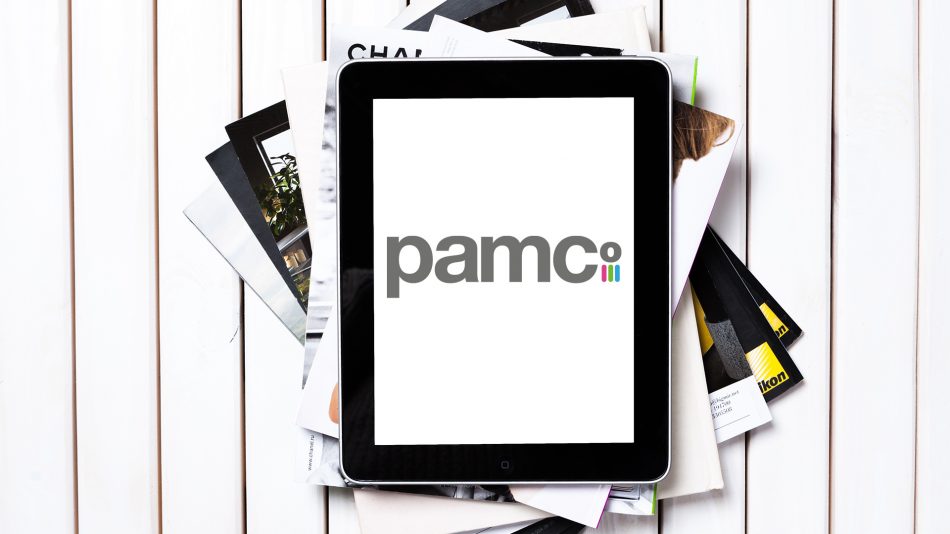Magazine readers still love print
Original article from FIPP can be read here
New figures published by YouGov Profiles show that UK and US magazine audiences still prefer reading their favourite publications in print. Out of the total 166,000 people polled (111,000 in the UK, 55,000 in the US), only 18% of UK respondents said that they got more enjoyment from reading magazines online vs print, and only 29% in the US.
These figures contrast starkly with news consumption habits, where the preference is now for reading online. In the UK, 54% said that they prefer to consume news content online versus in newspapers, with that figure rising to 60% in the US.
Shifting demographics
The demographic drilldown of the study reinforces conventional industry understanding – that as you move up through the age brackets, the preference for print becomes greater, with younger, more digital-native audiences skewing towards digital.

In the UK, only 10% of respondents in the 55+ demographic said that they preferred reading magazine content online, and 16% in the US. Indeed, even when quizzed on news consumption, only 36% of those in the 55+ category in the UK said that they preferred consuming news online, and 51% in the US.
Shifting economics
Of course, with shifting generational appetites, so too comes a shift in economic priorities for publishers. Print remains extremely profitable, while the current pattern of growth is clearly in digital.
Establishing the right balance, and at the right time, is a necessity that FIPP President & CEO, James Hewes, spoke about on the Journalism.co.uk podcast earlier this year:
“I think agility is probably the most important thing that a management team can have now in a media business,” said Hewes. “There are no sacred cows, you can’t say that this is the way we do things. You’ve got to be flexible and try new things, whilst at the same time recognising that your legacy business, your core business, is the thing that’s providing the profit that enables you to do that. So balancing the old and the new, the existing and the potential, is a really important feature of management.”

“The classic example in the media business is the difference between print and digital. Your print business is going to be declining in most of its revenue streams – you might have had a bounce with print subscriptions during the pandemic, but in general your business is going to be declining.”
“So what do you do? You manage that business for value, you manage it for profit. Your digital businesses are going to be growing, or they should be growing, so you manage them for growth… You take the profits from your legacy business and invest those into the new areas.”
Mathematics in action
One of the most interesting ways in which we have witnessed publishers managing this process of transition in recent years, is through bundling. As the importance of reader revenues has increased, particularly ahead of the impending Cookiepocalypse, we’ve seen many innovative examples of product marketing that combines both print and digital.
From Bauer’s Inside Empire club, to the relaunch of CREEM magazine, it’s a trend that we looked at recently in our Innovation Watch series.

For some however, the march of digital is just too influential to ignore, and in her own analysis of this latest YouGov report, Press Gazette’s UK Editor, Charlotte Tobitt, reminds us that even the most recognisable global magazine brands are no longer necessarily still wedded to paper:
‘GQ Deputy Global Editorial Director, Adam Baidawi, told Press Gazette earlier this summer there was a “romanticised” vision of print-centred magazines that was becoming “less and less sensical”.’
You can view the YouGov report in full here.


